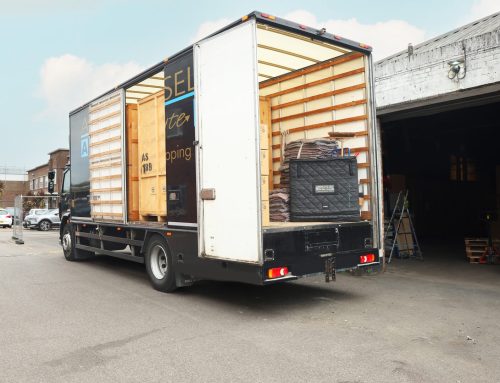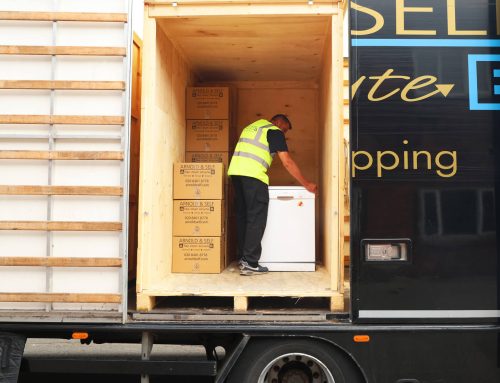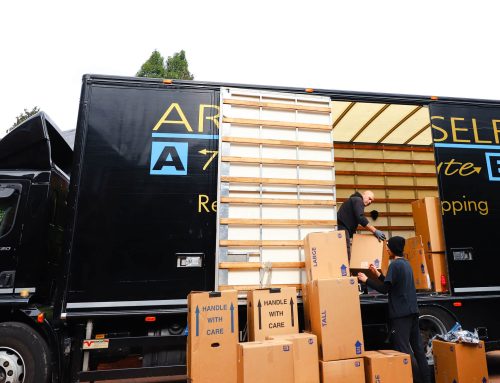Everything You Need to Know About Office Removals in the UK
Changing your business to a new location is one of the most important decisions you’ll make as a company owner or operations manager. Along with packing boxes and hiring a van, the process is about protecting your assets and ensuring that your team has settled in their new environment with minimal disturbance. Be it a small company looking to expand the working space, the proper preparation and professional support could be the difference between a seamless move and weeks of operational chaos. When you are planning your business’s next move, it is important to find reliable office removals in London.
The UK commercial relocation industry has evolved over the years, with specialist firms now offering complete solutions to businesses of all sizes. So, here’s everything you need to know about office removals in London.
Average Costs & Pricing
Office Relocation Costs
When budgeting for a business move, one has to know the different factors that determine the ultimate pricing.
All office relocation projects vary based on the size of the office, from small serviced office moves to large corporate relocations across multiple floors. Distance is also a big factor, as local moves within the same city cost less than cross-country moves.
Hourly Rates
Many office removal companies run on hourly billing, especially on smaller removals. The standard rates are different depending on the size of the team and the vehicle requirements. Saturday and evening moves carry high charges, although these slots help businesses avoid disturbing regular trading hours.
Hidden Fees
Other than the cost of base removal, several other charges surprise businesses. The removal of vehicle parking permits in the city centres is an addition to your bill. There are congestion fees on vehicles entering central London areas. Generally, a professional office removals company gives all prices upfront, without any hidden charges.
Cost Factor
Several variables directly affect your office relocation services. Accessibility is a practical issue that has an impact on pricing. Ground floor offices with parking outside are cheaper, and a building with many storeys but no service lifts needs more labour and is time-consuming.
Planning & Process
Choosing an Office Removal Company
The choice of the removal partner impacts your relocation experience. Check credentials first because reputable companies are members of industry bodies such as the British Association of Removers (BAR). These memberships signify compliance with professional standards.
Commercial move experience is also important. Find businesses that have a successful record in business relocation like yours. Moreover, get written quotes from at least three providers. Check insurance coverage carefully, and read reviews of all the customer service.
Best Times to Relocate
Office relocation can be cost-effective with strategic planning and minimal disruption.
Most companies relocated over the weekend to save weekday operations. Friday evening to Sunday moves are also popular, while August and the Christmas-New Year period have low business, which is also the best time to relocate. If your lease allows flexibility, mid-month relocations secure better rates and more attentive service. Consider your business cycle, too; accountants shouldn’t move during tax season, and retailers should avoid peak trading periods.
Corporate / Large-Scale Moves
Large organisations have unique challenges when relocating. Projects spanning multiple departments or sites require dedicated project managers who coordinate every element from initial planning through to final settling-in. Complete services for corporate clients include detailed timeline development, stakeholder communication plans, and contingency protocols.
IT infrastructure relocations form the most important component of major moves. Server rooms need specialist handling with anti-static materials and climate-controlled transport. Many corporate moves happen in phases, with the first migration of IT systems before moving staff. Professional firms work alongside your IT team for minimal downtime.
Large-scale moves often involve floor plans and space planning services, with companies partnering with furniture removers to configure new spaces efficiently.
Small Business Office Moves
Small Business & Startup Office Removals
Smaller operations have different priorities when moving premises. Budget sensitivity is higher, making DIY packing attractive; however, choosing professional office furniture removals would be the best choice, particularly for companies with limited staff.
Startups in coworking spaces have minimal furniture, mostly personal items and tech equipment. These moves are completed quickly, often within a few days. Small businesses should leverage flexible removal services:
- Partial moves where professionals handle heavy items while you transport smaller boxes
- Van hire with a driver works well for businesses with fewer staff members
- Flexible scheduling that accommodates your business hours and budget
Professional services will maintain client confidentiality through lockable crates or sealed boxes.
Office Relocations During Christmas & Holidays
The holiday period presents both opportunities and complications. The Christmas and New Year window offers extended business closures for unhurried locations. Moving between these dates means staff return in January to a ready office without missing working days.
The availability of the removal company tightens during holidays, so book several months ahead if planning a Christmas move. Weather conditions in the winter months add risk, with shorter daylight hours, snow, and ice, making electronics and paper documents vulnerable.
People & Culture
Reducing Employee Stress During Office Moves
Relocations unsettle staff, affecting morale and productivity if handled poorly. Transparent communication from the outset helps people prepare mentally and practically for change. Explain why you are moving, what the new office offers, and how it benefits the team. Involve employees in the process where possible. Let teams choose their new desk locations or have input on communal space design.
Provide clear packing instructions and timelines. Supply adequate materials, boxes, labels, tape, and give time during work hours to pack personal items. Plan first-day essentials carefully with operational kitchens and tested IT systems to avoid chaotic first mornings.
How Relocation Impacts Company Culture
Physical workspace shapes company culture. Moving from individual offices to open plans fundamentally alters how people interact. A relocation provides an opportunity to reinforce desired cultural values through office design and layout. Location affects culture too; moving from suburbs to a city centre changes commute times, lunch options, and after-work socialising.
Logistics & Operations
Office Furniture Dismantling & Assembly
New office furniture does not move in a single piece. Adjustable workstations and modular desking systems need to be dismantled, transported, and set up on site again.
Professional removal firms include this service. The process of dismantling begins with photographing each piece, then dismantling it. The screws and fittings are placed in clearly labelled bags attached to the corresponding furniture. Some furniture requires professional knowledge, such as reception desks with built-in electrics or height-adjustable desks that are to be maintained.
Handling Heavy & Bulky Office Equipment
Certain office items require special treatment. Industrial printers, photocopiers, and server cabinets are heavy and delicate. Specialised movers have trolleys, lifting straps, and in some cases mini-cranes to lift the heaviest. Likewise, heavy printers have fragile parts that have to be fastened during transportation, and print heads should be locked, and toner cartridges should be removed. Professional movers evaluate routes, survey doorways and map out all the steps, and handle all the heavy & bulky office equipment.
Conclusion
Moving your business office is a big task that requires proper planning, a realistic budget, and the appropriate professional assistance. Since it is necessary to know the cost and choose qualified office removals London services, as well as to address the needs of employees and work according to the complicated logistics, each of these aspects should be taken into account. The successful relocating businesses are those that do proper planning and communicate properly.
Arnold and Self is a company that specialises in commercial removals across London and UK and provides the most extensive services to businesses of all sizes. It is our trained staff that performs all the pre-planning and furniture removal up to the last final set-up and gives your move the skills it deserves. Contact us now and have your requirements discussed, and get a quote.
FAQ’s
What is the average cost of office removals in London?
The prices of office removals in London are different depending on the size of the office, distance and complexity. It is cheaper to rent small office moves, whereas big corporate moves demand huge investments.
When should I book office removals in London?
You should always reserve the office removals London service before small relocations, a few months before small to medium offices and half a year before a large relocation. Avoid booking during busy seasons for the hassle of unavailability, and go wisely during off-seasons.
Do removal companies pack office contents?
Yes, packing is another service that you can opt for in the office removals London service. The specialists are trained and experienced, which would save on the labour costs by making employees pack personal products.
What should I consider while planning the new office layout in the UK?
When planning the new office layout, consider productivity-increasing factors such as workspace design and natural light. Ensure that the office layout supports the company’s workflow and culture.
What is the average time spent in an office relocation?
Small offices can be moved within a few hours, medium offices can take one to two days, and big moves can take several days.



 020 8401 8778
020 8401 8778 




